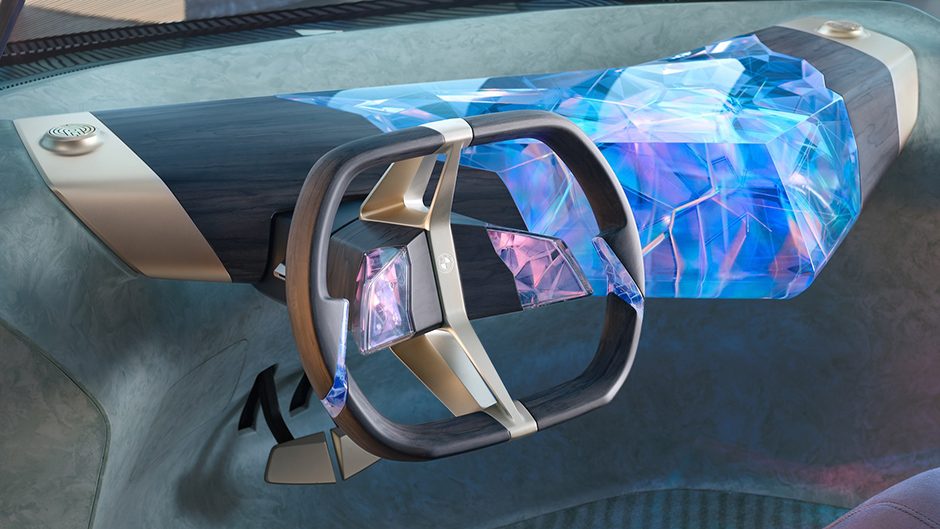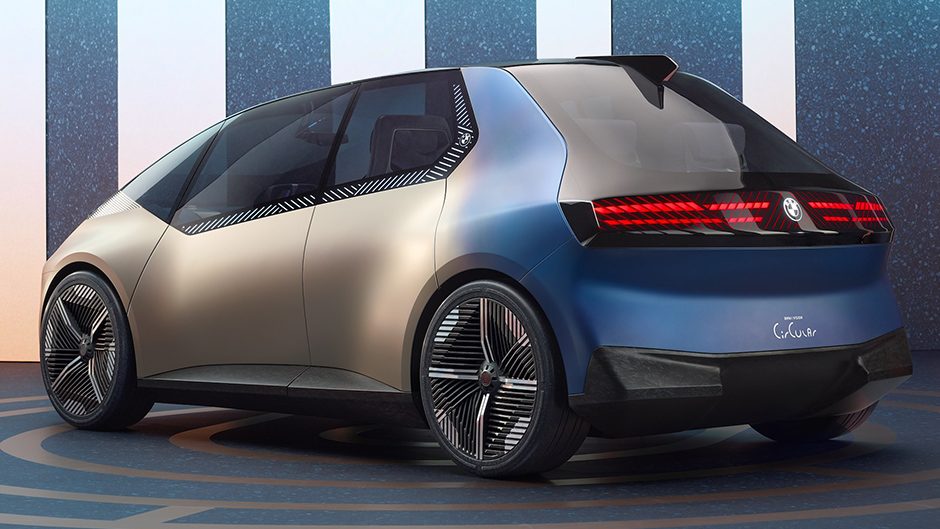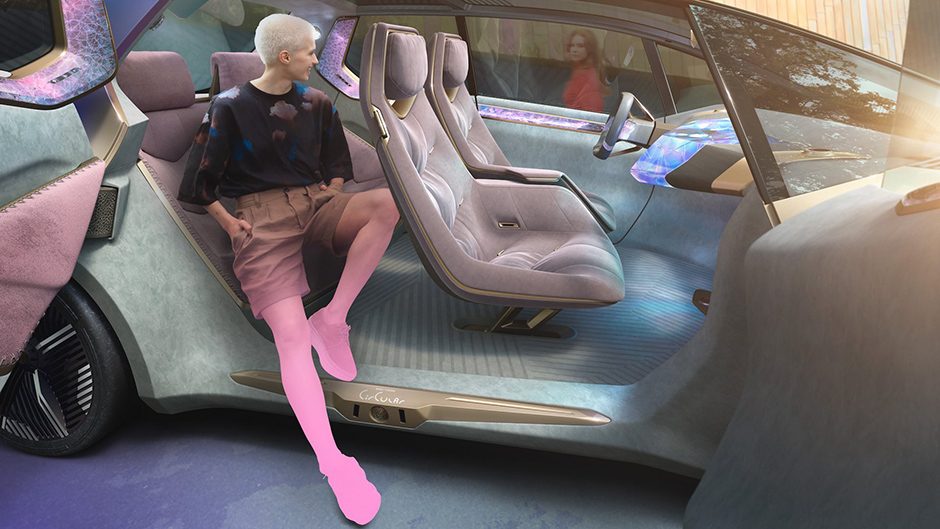This year’s Munich Motor Show has been filled to the brim thus far with wild and interesting concept vehicles, the vast majority of which are electric. But, BMW’s latest reveal is perhaps the most interesting of them all.
The new concept, named the iVision Circular, is also admittedly one of the most … err … ‘visually challenging’ reveals to date. Its looks are likely to divide as much as those of the controversial looking iX SUV. The model is meant to provide a window into what BMW’s urban offerings might look like in 2040.
The rear three-quarter view is fairly handsome, sporting a revamped version of the Hofmeister Kink, a neat LED-based full-length tail light, and clean surfacing. The front, though, is less of a success. Its version of BMW’s twin-kidney grille is vast, with some suggesting that the flat surface could be customised to show lights and grille outlines of different shapes.

As you can probably tell just by looking at it, the iVision Circular is fully electric. Not much else has been said about the model’s powertrain, although it’s most likely a single-motor, rear-wheel drive set-up.
But none of this really matters. Not the oddball styling, not the EV powertrain, not even the funky lights. No, the iVision Circular’s angle is that it’s designed to be as environmentally friendly in its construction as possible. Not only are BMW concerning themselves with tailpipe emissions, but they’re also looking at all sorts of other ways to reduce the emissions footprint of their production lines.

This philosophy won’t be news to regular NZ Autocar viewers. Just last week we detailed how BMW is planning to introduce more natural and renewable materials in the construction of its cars, including things like hemp and kenaf. In the same release it mused about future components being part of a ‘circular economy’. The iVision Circular unsurprisingly expands on this.
Let’s rattle them off. The metals in the Circular are recycled aluminium and recycled steel, the solid-state battery inside is made from recycled materials designed to be reused at the end of the car’s life, the tyres are produced from coloured recycled rubber particles, there’s no paint, the BMW badge on the front is etched in, rather than stuck on as a separate badge, the steering wheel is made from 3D-printed wood powder, and every panel is held on with just one fastener.

All of it is in a bid to reduce the amount of components required, and to ensure that more of the components that are there are produced with recycling in mind. There’s other trickery, too. It only has four pillars (thank you suicide doors), for example, and there’s no touchscreens inside. Instead, all the cabin information appears on the inside of the windscreen via a heads-up display.
That big hunk of taidai colour in the middle of the dashboard uses light effects to show what the car is doing in real time, and occupants sit on chairs that look like they’d be at home either in a retiree’s lounge, in a hipster PR firm’s lunchroom, and literally nowhere else.
We don’t see the seats, radioactive dashboard, or even necessarily the styling making it all the way to production. But, the production theories and philosophies of the iVision Circular are very likely to be the future. Not just for BMW, but for everyone.


